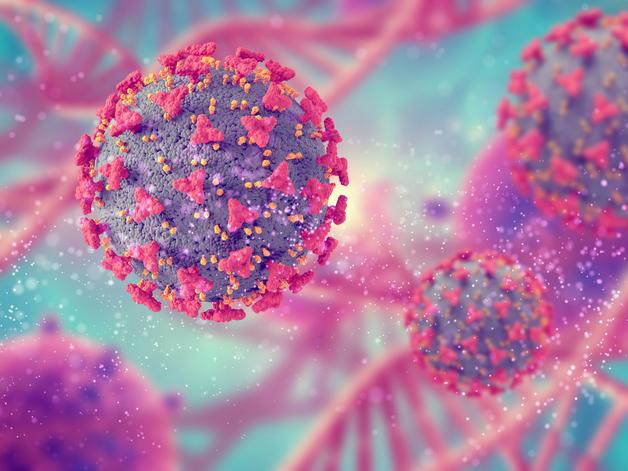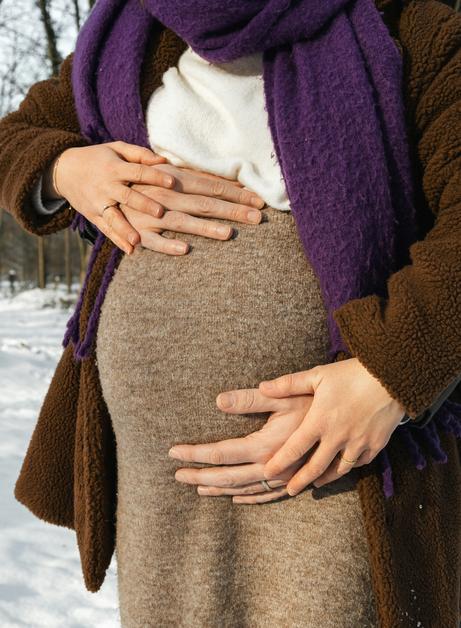Bringing a new life into the world is always charged with both excitement and questions. When phrases like “human papillomavirus pregnancy” surface at the doctor’s visit or while searching online, it is natural for parents to feel a surge of concern—What if this affects my child? Could this endanger my pregnancy journey? Uncertainties about infections during these precious months can often eclipse the simple joys of expectation. Parents sometimes wrestle with doubts: Is it common to have HPV? Will it impact my fertility, the baby’s wellbeing, or my ability to give birth safely? This is a space for practical answers. Here, you’ll find trustworthy medical facts about human papillomavirus pregnancy—from basics of the virus itself to the latest understanding about risks, screening, preventing transmission, effects on both mother and child, and simple strategies to go forward with confidence.
Understanding human papillomavirus pregnancy: what every parent wonders
What is human papillomavirus (HPV)?
Let’s dive right into the basics. Human papillomavirus (or HPV) encompasses a diverse family of more than 200 viral strains, most of which remain silent in the body. Imagine a spectrum: on one end, harmless infections fade away without a trace; on the other, select “high-risk” types—think HPV 16 and HPV 18—pose threat mainly to the cervix, often linked with pre-cancerous changes. For the majority, however, HPV is a visitor that slips in quietly, rarely producing any signs or symptoms.
Transmission rarely asks for much. A single episode of intimate skin contact—through vaginal, anal, or oral routes—can lead to an encounter. Even without intercourse, close contact may be enough. During human papillomavirus pregnancy, vertical transmission (from mother to child around birth) is rare, but still under scientific scrutiny. Most parents are never aware of carrying HPV, and usually, the immune system quietly clears out the virus in a year or two. No miracle cure exists yet, but vaccination and routine cervical screening remain the proven guardrails.
Main types and transmission routes
Pause for a moment: what do parents really need to know? HPV divides into low-risk (often responsible for those fleshy but benign genital warts) and high-risk forms (capable of causing cell changes in the cervix, with potential for long-term transformation into cancers if ignored). The transfer? Driven mostly by sexual intimacy, but sometimes by self-contact, or, albeit rarely, from mother to child during childbirth. Occasionally, DNA of the virus is detected in the placenta or fluids surrounding the baby, though such events seldom translate to tangible problems.
How common is human papillomavirus pregnancy?
If statistics were comforting, here’s one: at least 10 to 30 percent of pregnant women around the globe show evidence of HPV, making human papillomavirus pregnancy far from unusual. Most will never realize this—unless a test reveals its presence, usually during routine screening. Immune changes during pregnancy can allow HPV to linger a bit longer, but this does not mean heightened danger—only calling for tailored medical watchfulness.
Does human papillomavirus pregnancy affect fertility and conception?
Impact on getting pregnant
You may have heard rumours: “Does HPV ruin fertility?” The answer veers towards reassurance. Most episodes of human papillomavirus pregnancy have little or no real influence on a couple’s ability to conceive. Extensively reviewed scientific studies show only a marginal, and often theoretical, impact on the natural process of conception. Rarely, large warts or cervical changes may make sperm passage a bit more problematic—but this is the exception.
Effects on male and female fertility
Now, for a slightly technical detour: in men, HPV can occasionally stick to the outside of sperm or even disrupt their normal swimming behaviour (motility). Some research hints at potential microscopic inflammation or DNA injury, but real-life fertility consequences are limited. For women, HPV might tweak the local immune balance at the cervix or inside the womb, with some data describing a small increased risk of miscarriage or preterm birth. These incidents, however, are rare, and the direct impact on egg health or long-term fertility remains minor.
Potential risks during human papillomavirus pregnancy for mother and baby
Possible complications for pregnancy
Ninety-nine times out of a hundred, human papillomavirus pregnancy is silent, with no major bumps along the road. Genital warts can multiply or grow faster under pregnancy’s unique hormonal influence—occasionally causing discomfort or, extremely rarely, blocking the birth canal. High-risk HPV types may be loosely linked with a slight uptick in preterm birth or miscarriage. Again, it bears repeating: these risks are minimal on an individual basis.
When cervical changes do occur (detected via Pap smear as ASCUS, LSIL, or HSIL), they evolve at a leisurely pace, and aggressive interventions are almost always unnecessary before birth. Ongoing observation and repeat checks are the rule, not the exception.
Effect on baby’s development: fetal growth, preterm birth, miscarriage
It’s easy to worry when “infection” and “pregnancy” appear in the same sentence. Still, studies confirm that human papillomavirus pregnancy rarely leads to issues like poor fetal growth, early water breaking, or miscarriage, despite isolated reports in medical literature. If HPV is ever found in the placenta or baby’s tissues, most newborns handle the virus without any problem, clearing it from their bodies within months. The baby, in most cases, will thrive—just as nature intended.
Is HPV transmitted from mother to baby during human papillomavirus pregnancy?
Understanding vertical transmission
Are babies at risk? Vertical transmission typically happens at the moment of birth, especially during a vaginal delivery as the infant passes close to infected cells. Sometimes, researchers have found HPV DNA in amniotic fluid or placenta, hinting at very rare before-birth (in utero) transmission. Even in these circumstances, most babies emerge healthy without lasting consequences.
Birth methods and infection probability
Does a C-section prevent HPV transmission? Not really. Unless genital warts are so large they present an actual blockage or bleed heavily, vaginal birth remains standard. Newborns who do catch HPV during delivery usually clear it naturally. Only in exceptional cases do conditions like juvenile-onset recurrent respiratory papillomatosis (warts in the airway) develop.
What happens to exposed babies?
A sigh of relief for most parents: babies exposed to HPV during birth almost always clear the infection by themselves. Severe or prolonged complications occur only very rarely, so the pediatrician’s regular check-ups are sufficient.
Managing human papillomavirus pregnancy: practical steps
Screening and follow-up
How does medical care adapt during human papillomavirus pregnancy? Pap smear screening retains its place as the first line, swiftly picking up even tiny cervical changes. If unclear results pop up, a specific HPV test can pinpoint the viral type, and further examination (like a colposcopy) is reserved for details. Biopsies are performed with added caution—always weighing the benefits for both mother and baby.
When cell changes are found, the follow-up plan changes accordingly. High-grade findings mean a closer watch, while low-grade or benign results require only simple, periodic checks. The preferred pathway is gradual monitoring, as pregnancy itself seldom worsens cell abnormalities. Most interventions can patiently wait until after birth unless a rare suspicion of invasive cancer arises.
Treatment safety during pregnancy
Is treatment safe for the developing baby? The guiding rule: most HPV-related changes are better left untreated during pregnancy, as many will heal on their own. When therapy becomes necessary (for example, if warts cause severe symptoms), the safest methods include removing warts physically (like with laser, cryotherapy, or a mild acid such as trichloroacetic acid). Some medications used outside of pregnancy, such as podophyllin and imiquimod, are strictly avoided. Surgery is reserved for emergencies only—never as a first choice.
Cesarean section: real indications
When is surgery actually considered? Only if genital warts are so pronounced they could obstruct or heavily bleed during a vaginal birth, will obstetricians recommend a cesarean. HPV infection alone does not warrant this major step.
Special cases in human papillomavirus pregnancy: genital warts and cervical changes
Living with genital warts during pregnancy
Genital warts can sometimes appear or grow during pregnancy, creating discomfort and a sense of unease. They may bleed, cause irritation, or bring distress just due to their appearance. The care plan emphasizes gentle symptom relief and making sure birth proceeds without complications. If treatment is needed, physical removal remains safest. In many cases, after the baby arrives, the warts recede naturally and more thorough treatment may be scheduled later.
Tracking cervical changes: from detection to aftercare
Routine Pap smear checks sometimes flag up cervical intraepithelial neoplasia (CIN)—graded from mild (CIN 1) to severe (CIN 3). Unless there’s a hint of cancer, treatment is postponed and frequent checks suffice. The watchword is careful observation, adapting to circumstances but steering clear of unnecessary interventions.
Steps for preventing human papillomavirus pregnancy: before, during, after
Vaccination: a breakthrough—timing matters
Parents often wonder, “Should I get vaccinated?” The HPV vaccine has been a transformative step in public health, creating strong protection against most dangerous HPV types. However, this vaccine isn’t given during pregnancy. Best timing lies before becoming sexually active (usually up to age 26 years), but for those who missed out, it can be administered soon after childbirth. This provides an extra layer of safety for future pregnancies or before resuming sexual activity.
Routine prevention and healthy habits
Beyond vaccines, practical steps abound—condoms, though not foolproof, cut down transmission. Good personal hygiene, not smoking (since smoking can weaken cervical defences), and maintaining a wholesome diet all play a role. Regular gynaecological screening ensures early detection. Always consult specialists if any odd genital symptoms arise; home remedies or self-medication are best avoided.
Facing human papillomavirus pregnancy emotionally: support for parents
Emotional impact: from diagnosis to reassurance
A word about feelings—discovering an HPV infection when expecting can spark anxiety and a flood of questions. Will this mean complications? Could my baby suffer? Many people naturally confuse a positive HPV test with severe illness or cancer, when, for the vast majority, nothing alarming results from human papillomavirus pregnancy. Most pregnancies progress as intended, with patients and their babies staying perfectly well.
Finding guidance and building trust with care providers
Honest and empathetic communication between parents and doctors makes all the difference. Obstetricians, midwives, family doctors form the first line of support, ready with explanations tailored to your circumstances. Persistent worry is valid—sometimes, a session with a psychologist relieves emotional heaviness and clarifies the path forward, turning fear into peace of mind.
Long-term perspective after human papillomavirus pregnancy for mothers and children
Medical recommendations after birth
When pregnancy ends and hormones return to baseline, HPV and minor cell changes often resolve on their own. Still, a postnatal gynaecological check-up—with Pap smear and HPV test if needed—is a wise step, ensuring no concern lingers. Continued surveillance afterwards boosts prevention even further.
Research and outcomes for exposed children
What does data say about babies born after human papillomavirus pregnancy? Almost all clear the infection completely within a short span, and persistent or dangerous complications are truly exceptional. The only slightly raised risk—rare warts in the throat called recurrent respiratory papillomatosis—impacts a minuscule number. A standard birth plan, rather than an automatic C-section, remains best for both baby and mother.
Key Takeaways
- Human papillomavirus pregnancy is widespread and most often passes without drama or major risk.
- The odds of transmission or dangerous health effects (to mother or baby) are minimal and tightly managed with expert medical guidance.
- Routine Pap smear checks and monitoring secure the health of both parent and child.
- Most treatments wait until after delivery, prioritizing natural recovery and overall safety.
- Prevention rests on HPV vaccination (ahead of pregnancy), use of condoms, regular medical visits, and avoidance of unproven remedies.
- Emotional support, clear communication, and access to reliable medical teams are powerful allies for any parent.
- For personalised advice and free child health questionnaires, parents can now download the application Heloa.
Questions Parents Ask
Can HPV affect breastfeeding or be transmitted through breast milk?
Absolutely not. HPV transmission via breast milk has never been documented, and there is no need to pause or stop feeding because of this infection. If you ever notice warts or unusual skin changes near the breast, check with your healthcare provider for reassurance and guidance.
Can HPV cause complications in future pregnancies?
Generally, human papillomavirus pregnancy does not cast a shadow over future pregnancies—most infections resolve by themselves with time. If you’ve had treatment for any cervical changes before, it’s sensible to mention this history to your doctor for careful observation in future pregnancies. Most parents go on to experience healthy, regular pregnancies without added risks.
What should I do if I discover I have HPV during pregnancy?
Try not to worry—this experience is very common, often with little or no immediate consequence. The most practical step is to maintain regular consultations and screenings as directed by your doctor. If any treatment is suggested, it is always for your safety and the baby’s wellbeing, carefully weighed by your medical team.
If concerns gain ground, remember that resources and professionals are always available to support you—every step of the way.









